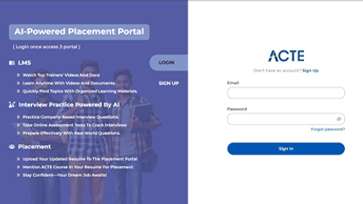1. What is the significance of software testing?
Ans:
Software testing assesses a program to find flaws or mistakes and make sure it satisfies quality standards and requirements. It is crucial because it facilitates the early detection of flaws, enhances software performance, guarantees dependability, and raises customer satisfaction by producing a reliable and functional product.
2. What is the difference between verification and validation in software testing?
Ans:
Verification checks whether the software matches specifications and design documents, often through reviews and static analysis. Validation ensures the software meets user expectations and actual requirements by running the code and performing dynamic testing.
3. What are the different levels of software testing?
Ans:
Testing of units, integration testing, system testing, and acceptance testing are among the several software testing tiers. Unit testing examines each component separately. Integration testing examines the interactions between modules. System testing verifies the system as a whole. Acceptance testing guarantees that the program satisfies the needs of the end user.
4. What is the STLC, or software testing life cycle?
Ans:
The Software Testing Life Cycle is a procedure that describes the steps in software testing, from requirement analysis to test closure. Requirement analysis, test case design, test planning, environment setup, test execution, and test cycle closure are the essential stages. This method guarantees a methodical approach to producing software of superior quality.
5. What distinguishes white box testing from black box testing?
Ans:
Black box testing uses input and output behavior to confirm the software functionality without examining the actual code structure. White box testing, which is typically carried out by developers or experienced testers, looks into the program core logic, code routes and structure.
6. What is test case prioritization?
Ans:
Test case prioritization sorts test cases by their importance, risk, or frequency of use to ensure that the most critical functions are tested first. This method helps identify major bugs quickly, especially when time or resources are limited during testing.
7. When is regression testing conducted, and what does it entail?
Ans:
Regression testing involves re-running previously executed test cases to confirm that new code changes have introduced new bugs or disrupted existing functions. It is typically done after enhancements, bug fixes or configuration changes to maintain software stability.
8. What distinguishes non-functional testing from functional testing?
Ans:
Functional testing confirms the software performs its intended functions according to specified requirements, focusing on user interactions and outputs. Non-functional testing evaluates aspects like performance, scalability, usability and security to ensure the software works well under different conditions and user loads.
9. What is a test plan and what are its components?
Ans:
A formal document that describes the goals, resources, timetable, methodology, and scope of testing is called a test plan. Test objectives, scope, strategy, resource planning, environment, deliverables, entry and exit criteria, and risk management plans are some of its constituents.
10. What is boundary value analysis in software testing?
Ans:
Boundary Value Analysis (BVA) is a test design technique focused on testing values at the edges of input ranges. Since errors often occur at boundaries, BVA helps identify defects by testing just below, at, and just above the boundary values, making it an effective way to improve test coverage.

























